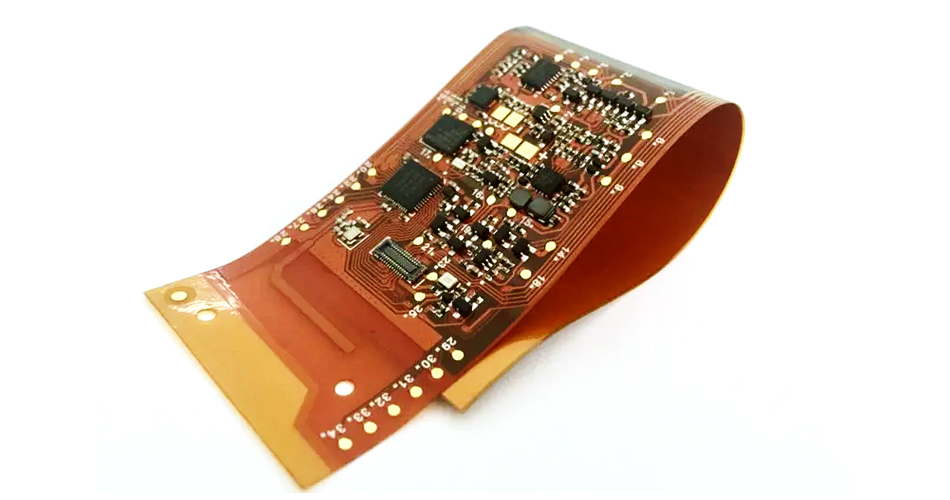- English
- Español
- Português
- русский
- Français
- 日本語
- Deutsch
- tiếng Việt
- Italiano
- Nederlands
- ภาษาไทย
- Polski
- 한국어
- Svenska
- magyar
- Malay
- বাংলা ভাষার
- Dansk
- Suomi
- हिन्दी
- Pilipino
- Türkçe
- Gaeilge
- العربية
- Indonesia
- Norsk
- تمل
- český
- ελληνικά
- український
- Javanese
- فارسی
- தமிழ்
- తెలుగు
- नेपाली
- Burmese
- български
- ລາວ
- Latine
- Қазақша
- Euskal
- Azərbaycan
- Slovenský jazyk
- Македонски
- Lietuvos
- Eesti Keel
- Română
- Slovenski
- मराठी
- Srpski језик
Flexible electronic circuit board (Flex PCB) design and application
2024-05-22
Flexible electronic circuit board (Flex PCB) is a flexible electronic circuit board usually made of flexible insulating materials such as polyester film or polyimide (PI) film. They offer greater flexibility in bending and shape than traditional rigid circuit boards, making them useful in many applications. The following is information on the design and application of flexible electronic circuit boards:

Design of flex PCB:
1. Material selection: Selecting the appropriate flexible material is very important. Common materials include polyester, polyimide, polyetherketone, etc. Material selection should be considered based on factors such as application requirements, operating temperature range, and chemical stability.
2. Hierarchical structure: Flexible circuit boards can be single-layer or multi-layer, depending on the complexity of the circuit. Multilayer flexible circuit boards typically contain internal copper layers and power planes.
3. Circuit design: When designing circuits on flex PCB, the properties of flexible materials should be taken into consideration. Parts that require the use of flexible circuit boards may need to consider factors such as bending radius, interlayer connections, etc.
4. Pad design: Pads should be designed with reliable soldering in mind, as flexible circuit boards are often used in highly dynamic applications.
5. Protection and Encapsulation: To protect flexible circuit boards from mechanical and environmental damage, appropriate encapsulation and protective measures are usually required, such as polyurethane coatings or silicone encapsulation.
Applications of flex PCB:
1. Portable devices: Flexible electronic circuit boards are often used in portable devices such as smartphones, tablets, and wearable devices because they can adapt to different shapes and sizes.
2. Medical devices: In medical devices, flexible electronic circuit boards are used in various applications such as medical sensors, medical imaging equipment, and implantable medical devices because they can adapt to the curves and movements of the human body.
3. Aerospace: Flex PCB are widely used in the aerospace field, such as electronic devices in satellites, spacecraft, and aircraft, as they can reduce weight and adapt to space constraints.
4. Automotive Electronics: Flex PCB are also used in automotive electronics for in-car entertainment systems, navigation, safety systems, etc., as they can adapt to curves and space constraints inside the car.
5. Industrial control: In industrial control systems, flexible electronic circuit boards are used for various sensors, controllers and communication equipment because they can adapt to various industrial environments and enclosed spaces.
In summary, the design and application of flex PCBs have a wide range of fields and potential opportunities. They are becoming increasingly popular in the electronics field due to their ability to provide flexibility, reliability and performance in different applications.
-
Delivery Service






-
Payment Options









